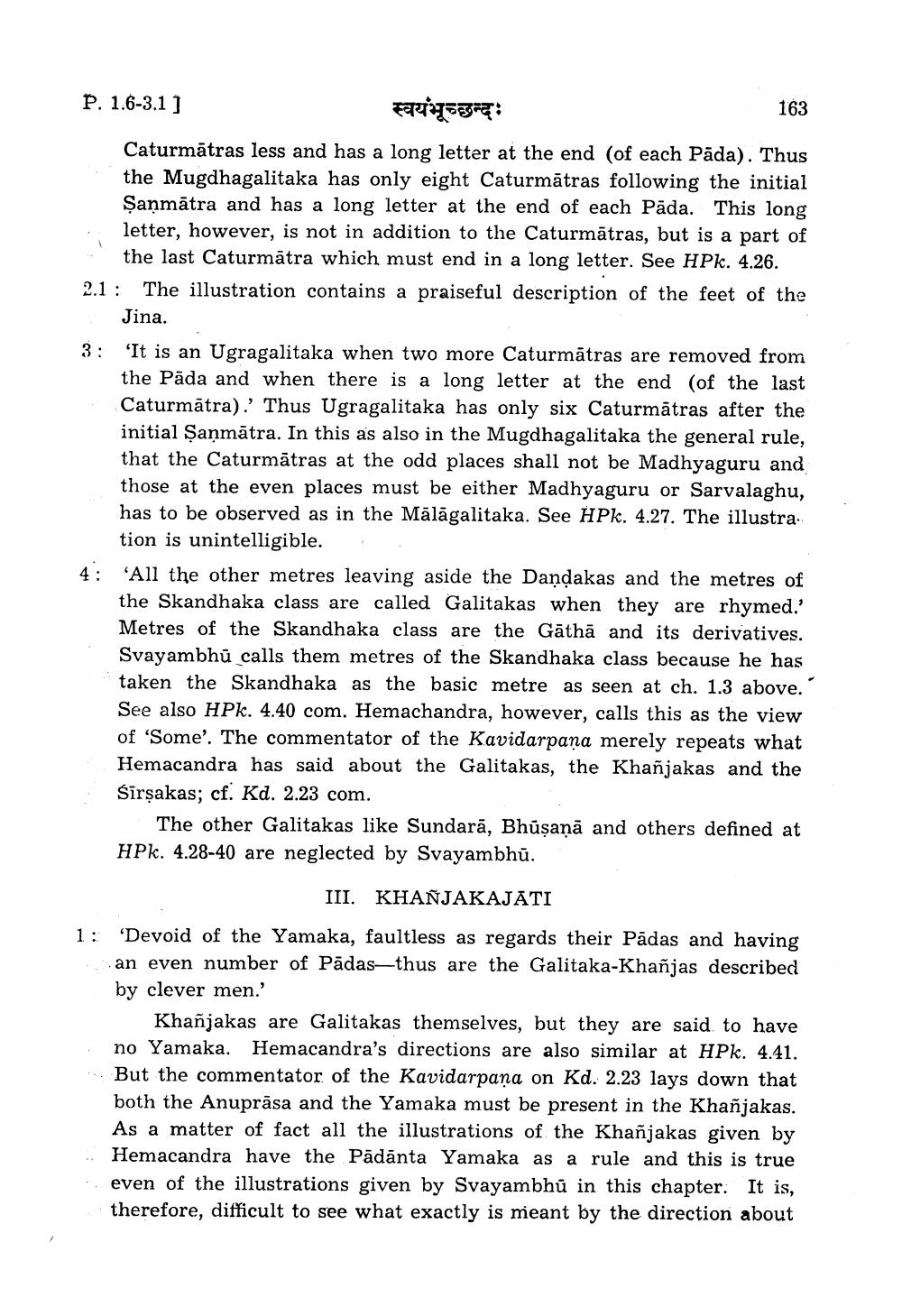________________
P. 1.6-3.1) स्वयंभूच्छन्दः
163 Caturmātras less and has a long letter at the end (of each Päda). Thus the Mugdhagalitaka has only eight Caturmātras following the initial Şanmātra and has a long letter at the end of each Päda. This long letter, however, is not in addition to the Caturmātras, but is a part of
the last Caturmātra which must end in a long letter. See HPk. 4.26. 2.1: The illustration contains a praiseful description of the feet of the
Jina. 3: 'It is an Ugragalitaka when two more Caturmātras are removed from
the Pāda and when there is a long letter at the end of the last Caturmātra)' Thus Ugragalitaka has only six Caturmatras after the initial Şaņmātra. In this as also in the Mugdhagalitaka the general rule, that the Caturmātras at the odd places shall not be Madhyaguru and those at the even places must be either Madhyaguru or Sarvalaghu, has to be observed as in the Mālāgalitaka. See HPk. 4.27. The illustra.
tion is unintelligible. 4: All the other metres leaving aside the Dandakas and the metres of
the Skandhaka class are called Galitakas when they are rhymed.' Metres of the Skandhaka class are the Gāthā and its derivatives. Svayambhū calls them metres of the Skandhaka class because he has taken the Skandhaka as the basic metre as seen at ch. 1.3 above. See also HPk. 4.40 com. Hemachandra, however, calls this as the view of 'Some'. The commentator of the Kavidarpana merely repeats what Hemacandra has said about the Galitakas, the Khañjakas and the Sirsakas; cf. Kd. 2.23 com.
The other Galitakas like Sundarā, Bhusanā and others defined at HPk. 4.28-40 are neglected by Svayambhū.
III. KHANJAKAJATI
1: "Devoid of the Yamaka, faultless as regards their Pādas and having
an even number of Pādas—thus are the Galitaka-Khañjas described by clever men.'
Khañjakas are alitakas themselves, but they are said to have no Yamaka. Hemacandra's directions are also similar at HPk. 4.41. But the commentator of the Kavidarpana on Kd. 2.23 lays down that both the Anuprāsa and the Yamaka must be present in the Khañjakas. As a matter of fact all the illustrations of the Khañjakas given by Hemacandra have the Pādānta Yamaka as a rule and this is true even of the illustrations given by Svayambhū in this chapter. It is, therefore, difficult to see what exactly is meant by the direction about




